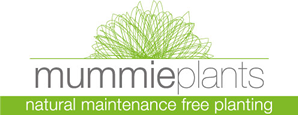Beware the term “Evergreen” when buying an office plant. If you expect this to mean that your plant will stay 100% glorious vibrant green over its life, think again. Ordinary plants can show signs of aging, feeling run down, and drinking/sunbathing to excess like the best of us. Yellowing leaves are a fact of life for many plants. That, or a warning sign that something is amiss.
Plants get their green colour from chlorophyll, the pigment that is essential for photosynthesis. When leaves produce insufficient chlorophyll they turn “chlorotic” becoming pale, yellow, or yellow-white.
Plants with sad, palid leaves are not a good look for a business that wants to project strength and vitality. But even hardy plants, bred to survive indoors, can struggle to sustain perfect good looks throughout their working careers. All manner of random natural factors can cause regular office plants to wither and yellow.
7 Reasons why plant leaves yellow
Natural Plant Aging: “Ever green” does not mean a plant will retain its every leaf in mint condition for eternity. A micro Cycle of Life occurs within every regular plant. For every budding new leaf there is a tiring older one. Elderly leaves often turn yellow before dropping off. This is how the plant balances available light, sacrificing older leaves in order to provide adequate “food” for hungry new arrivals. The process primarily affects the lowest, most-shaded leaves, particularly on foliage plants and palms and shouldn’t be a major cause for concern.
Protecting the look of your plant in this case means making the effort to nip off declining leaves as they appear. If your plant starts becomes too top-heavy, trimming back the main stem will promote new growth at lower levels.
Watering: Overwatering is perhaps the No.1 cause of yellowing leaves. We are conditioned to thinking we do plants a favour by regularly dousing them with water or ‘upcycling’ the leftovers of our water cooler cups. In fact very few plants – including tropical plants – enjoy living in muddy soil. The roots of the plant become overwhelmed with water and their leaves react by turning yellow. Protect your plant by making sure it is receiving the correct water rations for its variety and that its pot allows drainage. Better still, roster watering duties so dosages can be monitored.
An office plant’s leaves can also turn yellow when it is inadequately watered. The stems lose the strength to support their leaves and will start to shed them. Saving the plant is again a case of researching and applying the correct indoor water rations for the species.
Lighting Issues: Light exposure influences plants’ ability to make food and keep its leaves in healthy (green) condition. That is why the lowermost and ‘back’ leaves are most susceptible to colour loss. Plants rarely receive an even wash of illumination: The tendency is for one side to get direct window light and the other to make do with artificial illumination. Those parts of a plant that get too little light will naturally start to yellow. If only the shaded leaves of your plant turn pale it is a sign that underlighting is to blame. Protect your plant by periodically rotating it so all leaves get a fair share of energy-giving light.
Conversely, intense heat and too much direct sun can also turn leaves yellow. In this case, you will need to find a new home for the plant that offers partial sun and more shade.
Unhealthy Soil/Roots: If your plant is yellowing it pays to check what is going on beneath the surface. Delving into the plant pot can reveal serious hidden issues with soil and roots.
If the top leaves are yellowing or if there is an unusual pattern to the yellowing (i.e. the veins remains dark while the tissue between them turns yellow) it can be a nutritional problem caused by watering with calcium-heavy hard water. You can help by letting tap water settle to warmer room temperature before administering it.
Root damage will often manifest itself in yellowing leaves. Injury can result from incorrect use of fertilizers or pesticides, soil mineral deficiencies or underground insect infestation. Or the roots may simply lack adequate growth space. Prolonging the life of your plant will mean refreshing its soil or upgrading its planter.
Temperature Drops: Are your plants positioned in draughty areas of your building or near air-conditioner vents? If so, they will be more susceptible to leaf yellowing and dropping. Short periods of exposure to intense cold can be enough to cause outright browning on tropical plants. Sometimes our ideal plant locations are not ideal for the plants themselves. Protecting them will require moving them to a next-best location.
Viral Infection: A viral infection might show up as blotchy, spreading yellow patches on leaves throughout the plant. This might be accompanied by deformations in leaf shapes. Viral infections in plants cannot be cured and can infect your entire plant collection. Act quickly to dispose of plants you suspect of being infected.
A change in Environment: Something as innocuous as changing a plant’s location can trigger older leaves to yellow. And despite not being exposed to the elements, indoor plants – especially those located close to windows – often suffer some yellowing during seasonal changes and cold spells. Some reactions are to be expected as plants adjust to new environments and sun/heat cycles.
The Alternative: How to prevent yellowing for good
Invest in Mummie Plants and you never need endure the frustration of having your plants let you down. Our natural plants are truly ever-green: scientifically preserved to ensure their leaves stay a constant, vibrant green. That means no more pruning, water-rationing, repositioning, repotting or requisitioning expensive experts. You simply buy your plant, put it anywhere you want and never worry about lighting, watering, feeding or uprooting it. It’s that simple.
To find out more about our hassle-free office plants call us today on 01 296 4540.
